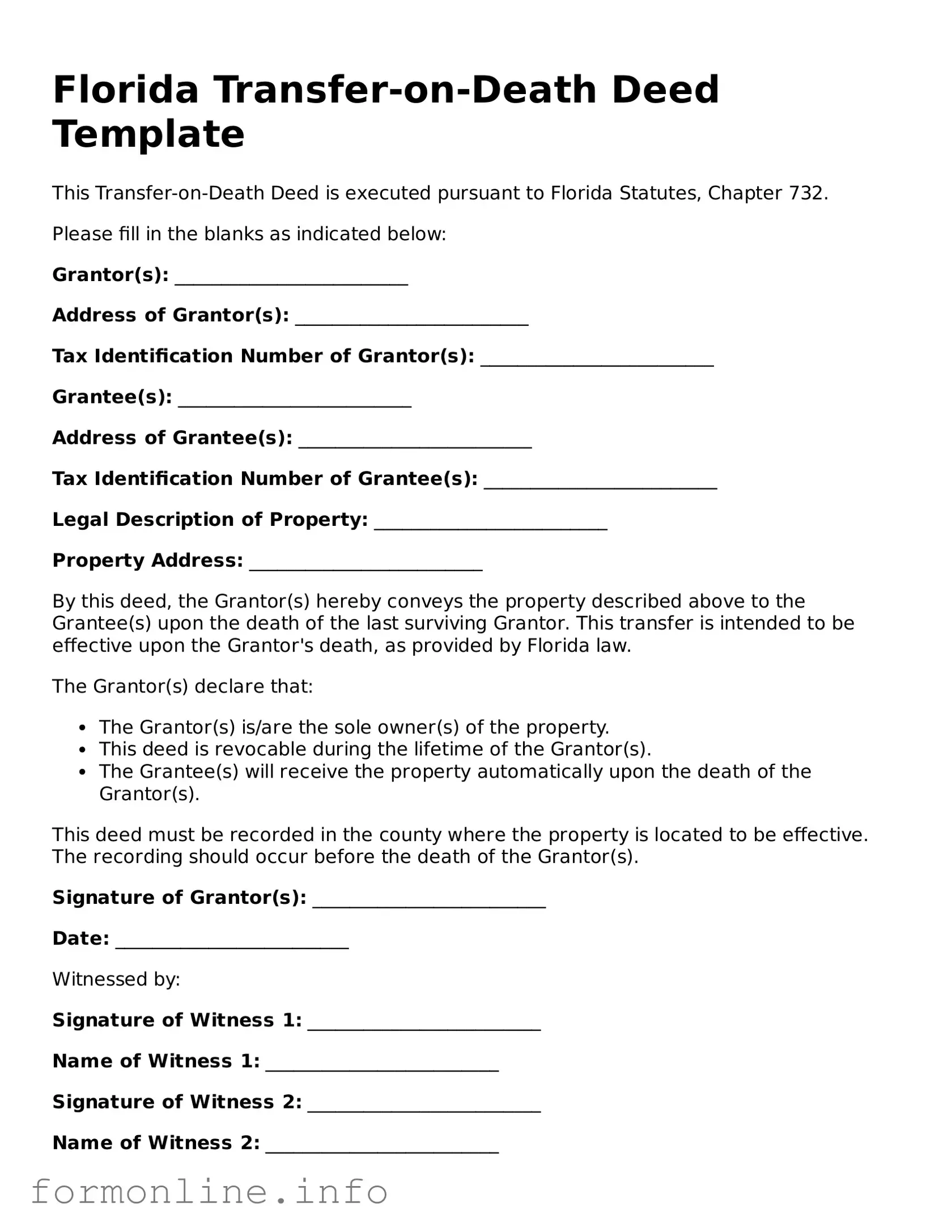Florida Transfer-on-Death Deed Template
This Transfer-on-Death Deed is executed pursuant to Florida Statutes, Chapter 732.
Please fill in the blanks as indicated below:
Grantor(s): _________________________
Address of Grantor(s): _________________________
Tax Identification Number of Grantor(s): _________________________
Grantee(s): _________________________
Address of Grantee(s): _________________________
Tax Identification Number of Grantee(s): _________________________
Legal Description of Property: _________________________
Property Address: _________________________
By this deed, the Grantor(s) hereby conveys the property described above to the Grantee(s) upon the death of the last surviving Grantor. This transfer is intended to be effective upon the Grantor's death, as provided by Florida law.
The Grantor(s) declare that:
- The Grantor(s) is/are the sole owner(s) of the property.
- This deed is revocable during the lifetime of the Grantor(s).
- The Grantee(s) will receive the property automatically upon the death of the Grantor(s).
This deed must be recorded in the county where the property is located to be effective. The recording should occur before the death of the Grantor(s).
Signature of Grantor(s): _________________________
Date: _________________________
Witnessed by:
Signature of Witness 1: _________________________
Name of Witness 1: _________________________
Signature of Witness 2: _________________________
Name of Witness 2: _________________________
This Transfer-on-Death Deed requires no consideration and is effective upon the Grantor(s)' passing, contingent on the terms outlined herein.
Note: It is advisable to consult with a legal professional regarding the execution and implications of this deed.
